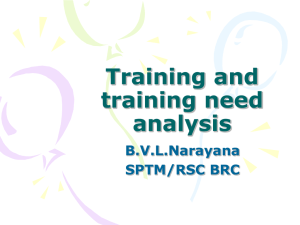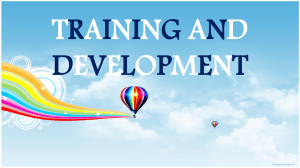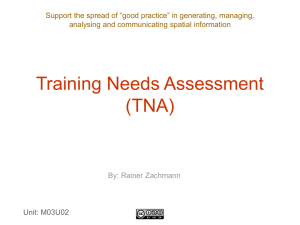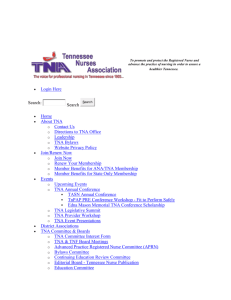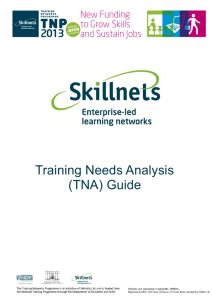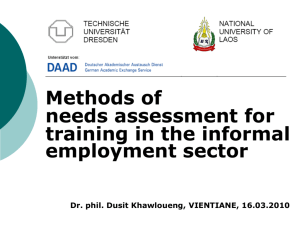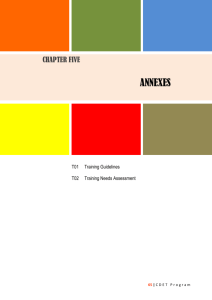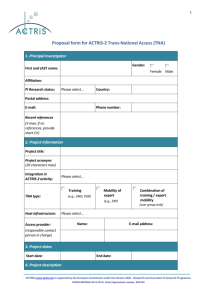- NATO School Oberammergau
advertisement
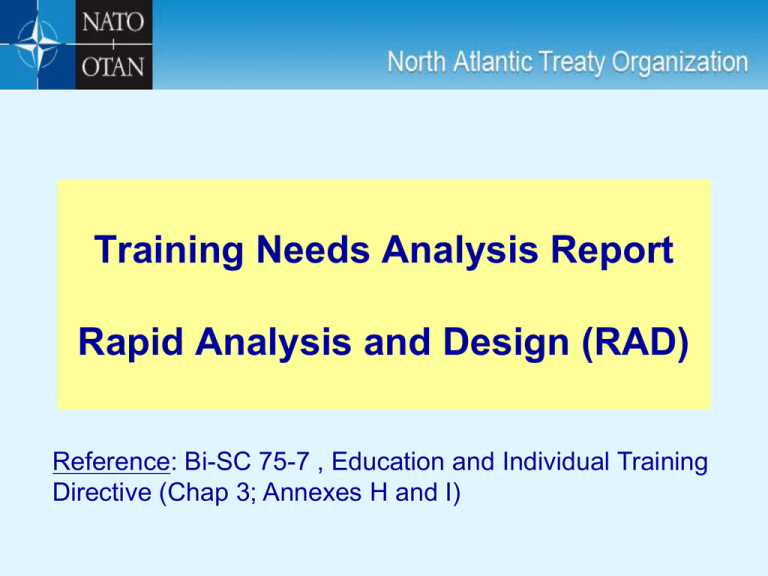
Training Needs Analysis Report Rapid Analysis and Design (RAD) Reference: Bi-SC 75-7 , Education and Individual Training Directive (Chap 3; Annexes H and I) Lesson Objectives Describe the TNA Final Report Explain the TNA Final Report Structure Explain Rapid Analysis and Design (RAD) TNA Final Report Prepared by TNA WG Addressed to the RA Approved by ACOS JETE Report Template Bi-SC D 75-7 Annex H With POI Doc 1, Doc 2 Part 1 TNA Final Report 1. 2. 3. 4. 5. 6. 7. Executive Summary Introduction Scope and Purpose Limitations Assumptions Methodology Findings a. Performance Gap & Cause analysis b. Collective Training c. Target Population Analysis d. Training Options Analysis 8. Conclusions 9. Recommendations 10. Annexes TNA Final Report Structure Executive Summary Introduction A brief history of the requirement including why the TNA has been conducted TNA Final Report Structure Scope and Purpose. Focused description of the TNA scope, ultimate goals and objectives Limitations What limitations were imposed that limit the potential findings/recommendations TNA Final Report Structure Assumptions If applicable Used to identify what assumptions were necessary or have been made Methodology/Approach How the TNA was conducted Briefly describe each method used TNA Final Report Structure Findings Performance Gap and Cause Analysis From PO to LO Other causes identified – Action needed in Recommendations section Collective Training Requirement Target Population Analysis Training Options Analysis TNA Final Report Structure Conclusions Derived from findings No new information Recommendations Implementation of the programme Other causes Specific and concise Must be recommendations Not conclusions TNA Final Report Structure Annexes Important part of the report MUST include LOPS and Summary of target audience Can include: Research data; Tables; Decision matrix; and Task, Skill, Knowledge lists. The Analysis Phase The Analysis Phase Problem perceived Front end analysis TNA request Scoping report TNA WG Identify tasks Write PO s/ LOPS Describe target population Identify gap Prioritization of tasks Write LO Write POI Doc 1, Doc 2 Part 1 Options analysis – recommended solution Write TNA Report New E&T Global Programming Political / Military Direction & Guidance Requirements Authority Strategic Training Plan Training Requirements Analysis (Operationalization) Department Head Operational Commanders’ Performance Gaps Training Needs Analysis Training Management System: ETOC, ITEP, eITEP ETOC, ITEP, eITEP 15 Rapid Analysis and Design (RAD) Reference: Bi-SC 75-7 , Education and Individual Training Directive (Chap 3; Annex I) Rapid Analysis and Design Designed for use by staffs experienced with the TNA process, learning domains and instructional methods. Outlined in Bi-SC 7-57 Annex I RAD Urgent Operational needs Compressed TNA and Instructional Analysis RAD RISK May overlook other factors and an E&T solution may not be optimal Statement List First step in the RAD process Creation of a task list by: Observing performance Discussion with SMEs Build scalar Statement The Analysis Identification Phase List X X X X X X Objectives Matrix Fast-track instructional analysis process EOs are matched to LOs Statement Matrix Instruction/Evaluation Matrix Identifies Learning Domain level Cognitive Psychomotor Affective Instructional Methodology Assessment Methodology Instruction/Evaluation Matrix Of Note… RAD does not preclude TNAs to be done afterwards POIs can be amended and created from the RAD information Lesson Summary Discuss the TNA Final Report Explain the TNA Final Report Structure Explain Rapid Analysis and Design (RAD) Questions?


